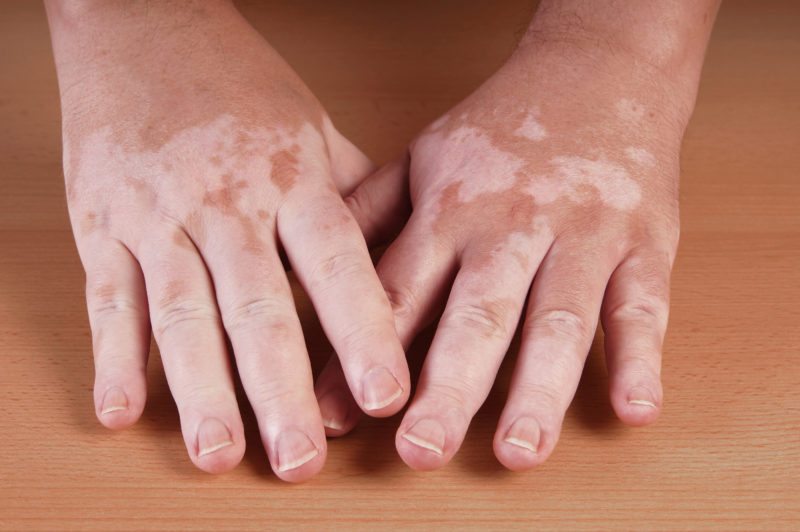
Question: Do genetics cause vitiligo?
Answer: It is possible that certain genes may increase the risk of vitiligo but genetics are not a proven cause to date. Studies show that variations in several gene combinations that affect the immune system (the way the body fights off infections) may increase the risk of vitiligo. For example, 20% of people with vitiligo also have a thyroid disorder.
Scientists believe that a gene called NALP1 may be involved in the function of the thyroid and skin melanocytes, so a disorder in that gene or harm to that gene from an environmental exposure, could cause both autoimmune disorders. But that does not explain all cases of vitiligo since 80% of people with vitiligo do not have any other autoimmune conditions. Variations in genes that control melanocytes may also play a role in causing vitiligo.
Since most people develop vitiligo as a young adult and are not born with visible symptoms, some scientists believe that these gene changes are caused by environmental exposures or experiences. Some risk factors for vitiligo, which can also affect genes, include:
- the body’s defenses going into overdrive after fighting off an infection with a virus
- psychological stress
- chemical exposure
- overexposure to the sun
- skin cuts or abrasions
Therefore some may still consider vitiligo a genetic condition when genes are affected and damaged from the factors listed above causing white patches to occur.